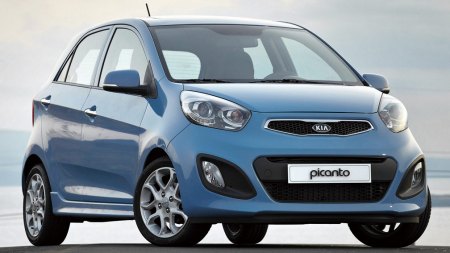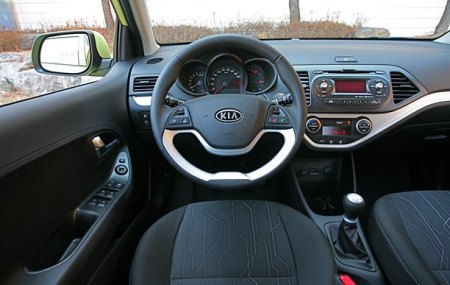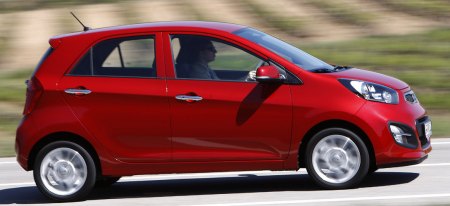
We
would have loved to see more innovative city cars like Smart or Fiat
500, but the truth is, most A-segment-cars shoppers have very tight
budgets – something around £8,000-9,000. The cheapest Fiat 500
costs £10,000, so it is obviously not designed for the majority.
To mainstream car makers, how to pack decent dynamics, mechanical
refinement, build quality, safety and enough space for four in a car
costing £8,000-9,000 must be a steep challenge. Suzuki and
Daihatsu manage that in their K-cars, but not without compromises. In
recent years, Korean car makers start taking the lead in this respect.
They make use of their production cost advantage, combining with strong
R&D and internationalized design to create some of the most
competitive city cars on the market. These include KIA Picanto, Hyundai
i10 and Chevrolet Spark (Daewoo Matiz).
KIA Picanto – or Morning in Korea – was the first to enjoy great
success. The first generation
car sold more than a million copies since 2004, many of them in Europe.
Naturally, we can expect more from the second generation. The first
sign is good – Peter Schreyer gave it a pretty and recognizable look,
with a prominent lower grille and arrow-style taillights to distinguish
itself from rivals. The car is small, of course, but it looks smarter
and classier than most rivals, i10 and Spark included.

Measuring 3.6 meters in
length and 2385 mm in wheelbase, the new Picanto is right at the class
norm. It is tall and cab-forward, so its cabin offers plenty of room.
Space up front is excellent, while two adults can squeeze into the
back, something impossible on Fiat 500 (and Smart Fortwo, of course).
The interior is pretty well finished. Although tight cost means the
plastics used are hard, they are properly textured (unlike most
Japanese K-cars) to look and feel higher quality. Moreover, a faux
alloy accent runs stylishly under the dashboard, through the center
console and reaches the passenger side, lifting the ambience a lot. A
sporty, two-tone steering wheel deliver the same effect. This cabin
looks more upmarket than its price suggested.
Ditto the equipment. Standard features include power windows front and
rear, Bluetooth connectivity and steering wheel controls.
At 200 liters, boot space is decent rather than class-leading. However,
you can fold the split rear seats to expand luggage capacity to
870 liters.

The
Picanto sits on the same platform of Hyundai i10, unsurprisingly. The
suspensions, steering and powertrains are more or less the same, though
different tuning results in a different character. On the KIA, priority
is placed on comfort and refinement, so its suspensions adopt softer
springs and damping. The result is an absorbent ride and impressive
quietness for a small car that most buyers would love. Inevitably,
chassis dynamics is sacrificed somewhat compare to its Hyundai sibling.
Its body rolls more and the front tires give up earlier in corners. In
addition to a numb steering, this car is not that fun to drive.
Comparatively, the powertrain is more competitive. It offers a pair of
Hyundai Kappa engines, i.e. a 1.0-liter three-cylinder and a 1.25-liter
4-cylinder, both employ DOHC and dual-continuous variable valve timing
to enhance power and broaden torque curve. They produce 69hp and 87hp
respectively. You can't expect much pace from the 1.0 engine, but it
pulls eagerly in town, thanks to a max torque of 70 lbft which is
delivered at only
3500 rpm. Moreover, noise level is surprisingly low at highway speed
(partly due to the good sound deadening). It is one of the least
painful 1-liter engines on the market. The 1.25 engine shares the same
sweet manner. It just offers more punch so that it no longer struggles
to overtake on highway.

For sure, its
good design, space, refinement and value for money will make the new
Picanto a
great commercial success. However, lacking a fun handling, more
powerful
engines and any innovations, it is still hard to recommend it to our
readers. If you can afford a couple of grands more, choose a FIAT 500
will make you feel far prouder.